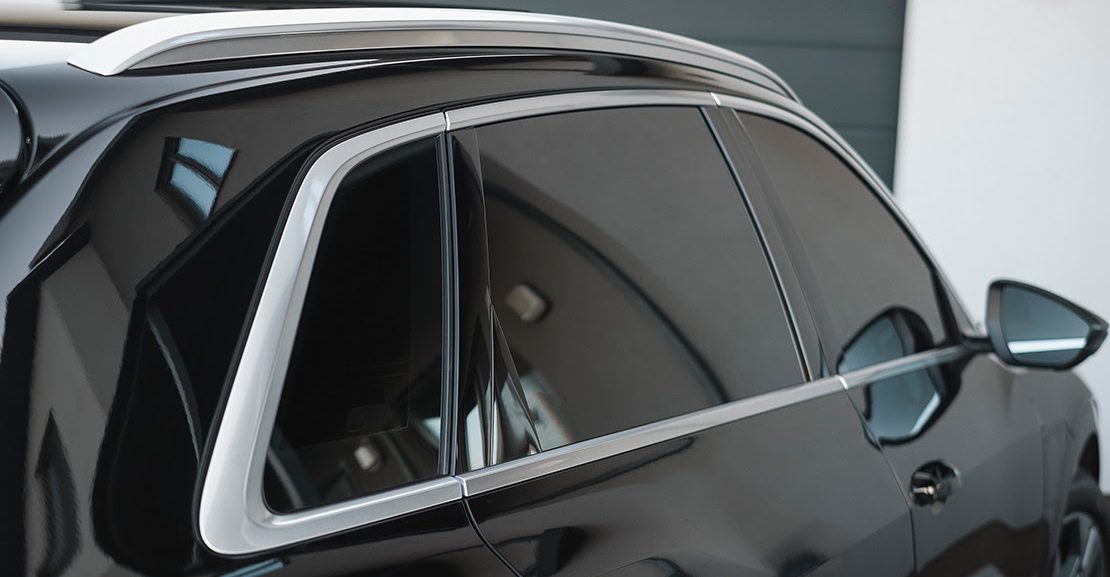When you shop for carbon film, it can be really frustrating to make sense of all the BTU claims and technical specifications that different manufacturers present. Every company seems to test their products differently, and the numbers on their spec sheets won’t actually tell you if that particular film is going to make your space cooler or if it’s just going to make your windows darker without doing much else.
The window film industry has changed quite a bit over the past decade or so. Manufacturers moved away from those visual light transmission percentages and started focusing more on the heat rejection metrics instead. The problem is that many buyers find out too late that the window film they had installed before barely rejected any heat at all – even though it looked dark and seemed like it would work. The BTU measurements from controlled testing environments are actually worth paying attention to if you want to know how a carbon film performs.
Professional installers know that these numbers have a direct effect on the comfort levels and energy savings. The issue is that manufacturers still publish data that you can’t compare because they all use their own proprietary testing methods instead of following any industry standard.
Let’s look at how these BTU measurements can help when you pick the right window film!
The Truth About BTU Testing Methods
Carbon film spec sheets can be a headache to decipher, and there’s a straightforward reason for that. BTU measurements show up everywhere on these sheets. But the numbers almost never mean what you’d expect them to mean. The problem is that manufacturers all seem to have their own ideas about how to test and measure heat rejection.
The manufacturers who do it right actually follow established testing standards like ASTM E903 or NFRC-201. These standardized tests give you measurements in BTUs per hour per square foot – they tell you the exact amount of heat that the film prevents from passing through your window. For some context on what these numbers mean in practice – a film rated at 300 BTU/h/ft2 blocks roughly the same amount of heat that a small window air conditioner would need to remove from your room – it’s substantial protection.
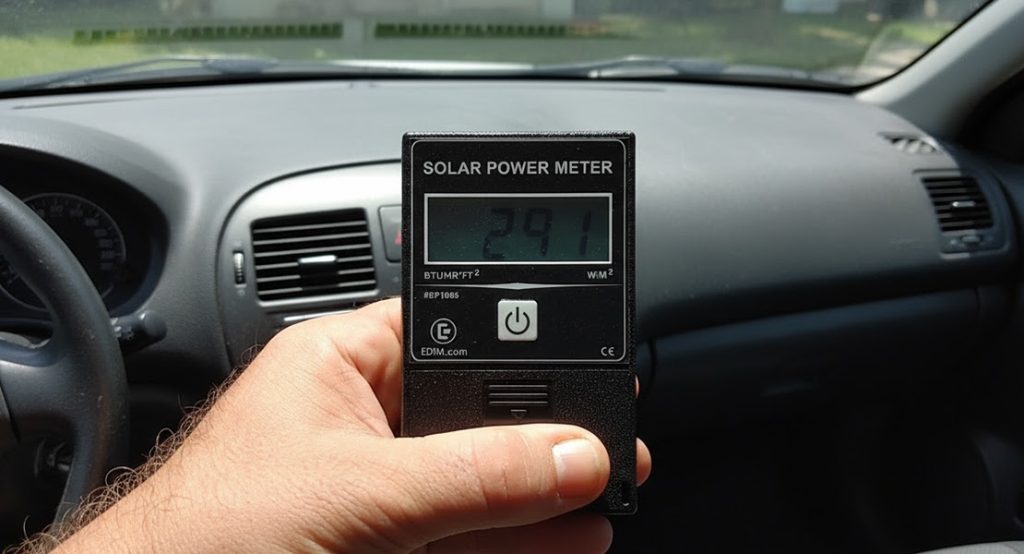
Most of the quality carbon films on the market today reject somewhere between 200 and 400 BTU/h/ft2, and some of the premium options can go quite a bit higher than that. The problem is that a lot of manufacturers don’t bother with these standardized tests at all. They just make up their own testing methods and then run with those instead. Their motivation is pretty transparent once you know what to look for. Custom test methods usually produce more impressive numbers because manufacturers can adjust the test conditions in any way they want. They adjust variables until their films look exceptional on paper, and it makes it impossible for you to compare different products fairly when you’re shopping around.
I see installers deal with this issue all the time. One manufacturer’s spec sheet might show 350 BTU/h/ft2 rejection, and another company shows 500 for what seems like a similar product. The catch is that if those two companies used completely different testing methods, that higher number could actually be from the inferior film! Without standardized testing across the board, there’s just no reliable way to determine which film will perform better on your windows.
The industry adopted BTUs per hour per square foot as the standard measurement for some very simple reasons. This metric directly correlates to the amount of heat energy that either passes through or gets blocked by your window over time.
The Right Temperature Gap for Tests
Carbon film heat rejection tests need a pretty particular temperature difference to work correctly – somewhere between 15 and 25 degrees Fahrenheit works best for accurate BTU measurements. A smaller difference means you won’t be able to detect the actual performance variations between different films. Push it past 25 degrees, though, and measurement errors will start to show up in your data.
Professional testing labs use heat lamps that generate more than 1,000 watts per square meter because they need to replicate the conditions during peak summer conditions. The technicians at these places will tell you it feels like a controlled sauna in there all day long. The temperature has to remain completely stable throughout the entire testing process; otherwise, the results won’t mean anything.
Tests fail all the time, and the reasons are usually avoidable – either the equipment wasn’t calibrated before the test began, or the testing team ran their experiments at different times throughout the day without thinking about how the temperature fluctuates. Morning tests don’t usually match the afternoon results, and the culprit is usually the ambient temperature in the testing environment that rises and falls as the hours pass. Just a 2 or 3-degree difference in room temperature is enough to throw off your measurements completely.
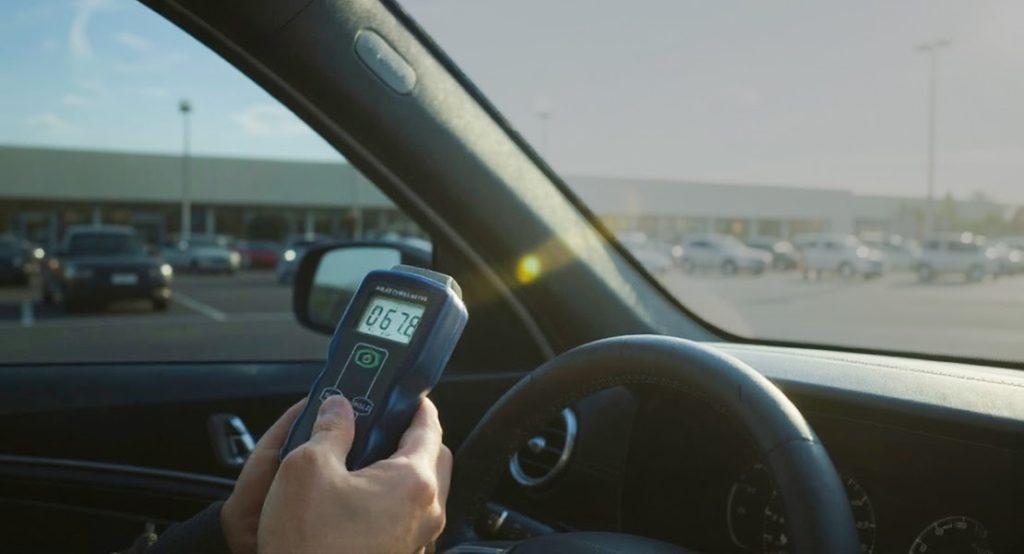
Home test kits that you can buy online almost never produce results that match what professional labs get, and there’s a straightforward reason for that. They just can’t control all the different variables that affect heat rejection measurements. Professional laboratories use climate chambers that maintain temperatures within 0.5 degrees of the target. They also closely monitor the humidity levels and track air circulation patterns throughout the testing area.
The equipment needed for accurate testing takes a big investment – we’re talking about tens of thousands of dollars just to get everything set up correctly. Without these controls in place, though, any BTU rejection rates that you calculate are basically just educated guesses. Each variable that goes uncontrolled introduces another layer of uncertainty into your final data.
Carbon Films Block More Heat Than Metallic
Carbon films and metallic films perform quite differently, and the difference between them is actually pretty big once you run the numbers. Premium carbon film available today rejects about 60% to 80% of the total solar energy that tries to pass through it. Metallic films usually hit lower marks. It’s usually somewhere between 40% and 60%. Those percentages can translate to real differences if you measure the heat reduction in BTUs.
Here’s a quick example to put this in perspective. If your window is being hit with about 1,000 BTUs of solar heat every hour, a quality carbon film with 70% rejection is going to block around 700 BTUs. A metallic film with 50% rejection only stops about 500 BTUs. We’re talking about an extra 200 BTUs of heat per hour that the carbon film blocks. Over the course of a hot summer day, those extra BTUs start to pile up, and you’ll feel the difference.
Customers who make the switch from metallic to carbon films usually mention how much more comfortable their rooms feel afterward. They can sit next to their windows on sunny afternoons without feeling like they’re baking. Before the upgrade, that exact same area would have been unbearable during peak sun hours.
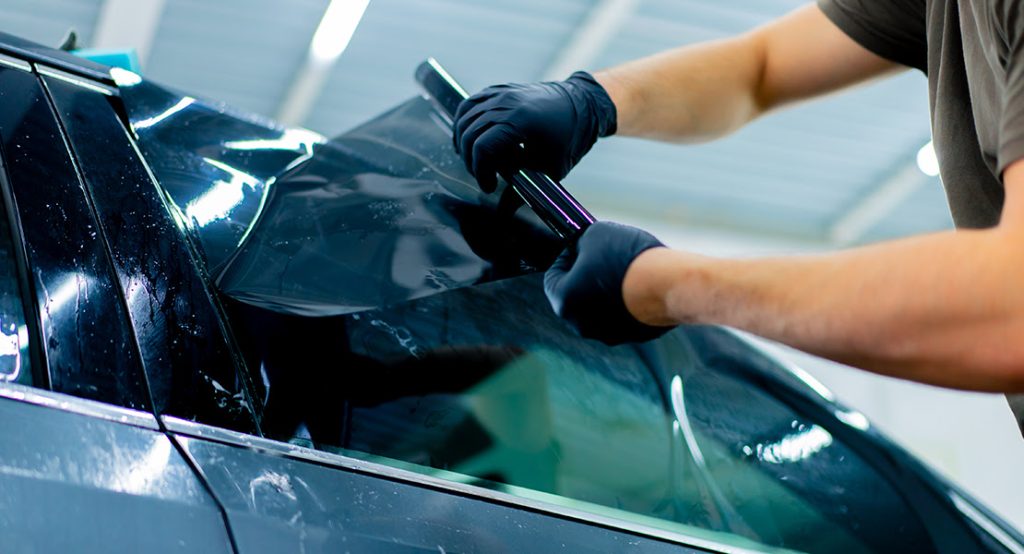
Metallic films still have their defenders, and I hear the same old arguments all the time. Plenty of installers will tell you that metallic films perform better because they have that shiny, reflective appearance. What they don’t know is that visual appearance has very little connection to heat rejection performance.
One more benefit worth mentioning is that carbon films won’t cause problems with your electronics at all. Cell phones, Wi-Fi routers and garage door openers – they all work just fine with carbon films installed. Metallic films can actually block or weaken these connections to the point where your devices stop working properly.
Of course, not every window in every home needs maximum-strength heat rejection. A north-facing window in Minnesota has very different needs than a west-facing window down in Arizona. The best strategy is to match your BTU rejection level to the heat load that your windows experience. Some situations call for 40% rejection, and that does the job just fine. Others need that full 80% protection to maintain comfort and to stop your energy bills from going through the roof.
How Building Films Beat Your Car Films
Most car window films are really quite thin, with most of them somewhere between 1.5 and 4 mil. Architectural films are very different, though, and these can be as thick as 14 mil, and they still install just fine on your windows. All that extra material gives you much better heat-blocking capabilities, and the difference between the two types is pretty dramatic if you compare them side by side.
Automotive installers who branch out into architectural work usually make the same assumption about window films – one type of film works the same as another. The manufacturers are the same ones who make the automotive and architectural films anyway, so the performance would be about the same. At least that’s what everyone assumes until they actually pull up the spec sheets and compare them side by side. Architectural films can reject twice as much heat as automotive films, and sometimes the difference is even bigger than that.
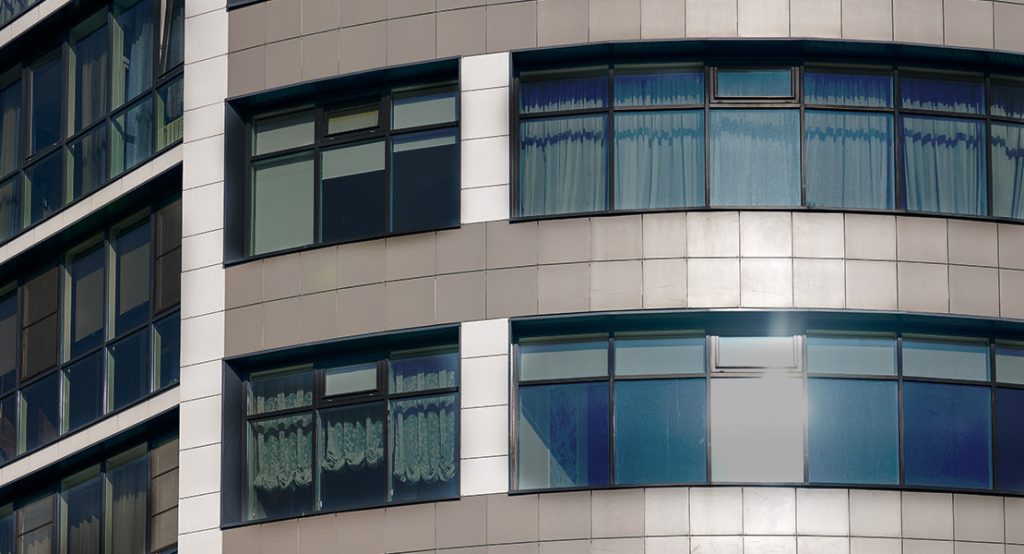
The whole process of measuring heat rejection can get pretty technical, and car windows make it even trickier. They have all these curves and different angles, and you can’t get the same BTU readings across the whole surface. Flat panels in buildings are way easier to test. You just set up your sensors on a flat surface, run the test, and the data comes out clean and reliable without any problems.
Advanced Nano Carbon Films Block More Heat
The latest generation of carbon films actually incorporates nano-carbon particles, and the technology behind them is fascinating. These small particles get positioned in very precise patterns throughout the film, letting them block far more solar energy than their predecessors ever could. The best part is that manufacturers can achieve this better performance without having to make the film any darker or bulkier than what we’ve been used to. Premium brands have started claiming that their newest products can reject more than 500 BTUs per hour per square foot. For context, that performance level beats standard carbon films by somewhere between 15% and 25%.
Independent labs are still working through all the verification tests on these manufacturers’ claims, and those final reports will tell us exactly which numbers we trust. The first wave of customers who bought these products have been posting reviews online, and the consensus has been remarkably similar and positive. Customers down in Arizona and Texas report that their vehicles stay much cooler throughout the day, which is pretty impressive since the temperatures in those states usually break 100 degrees for weeks on end during summer.
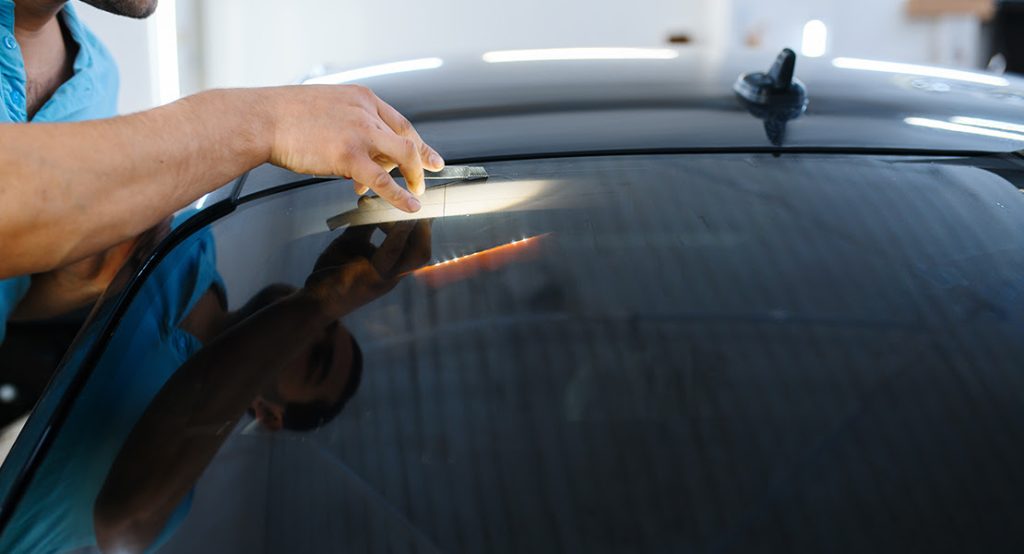
The breakthrough in this technology actually comes from the way manufacturers arrange the carbon particles inside the film. Engineers found out that reorganizing these particles at a microscopic level made all the difference. The new arrangement blocks heat very effectively, but the film still stays thin enough that you can see through it just fine.
Advanced films like nano-carbon do cost more than what you’d pay for standard carbon film – we’re talking about 2 or 3 times the price in most cases. The price tag makes sense, though, since the engineers spent years just figuring out how to get those small particles arranged correctly. And only a few places in the world actually have the right equipment and expertise to make these films right.
For anyone who lives in a place where extreme heat is part of everyday life, the investment might be worth it. When your vehicle usually sits outside in 110-degree heat for hours on end, every percentage point of heat rejection matters and the comfort difference builds up over time.
Transform Your View with Professional Tinting
Heat rejection numbers in the window film industry have become a bit of an obsession with customers alike, and there’s actually a valid reason for that. Once you get a grasp on what those BTU measurements mean and how they should be calculated, you can make much better decisions about which films are worth your money and which ones are just hype. Nobody wants to trust whatever numbers a manufacturer decides to print on their spec sheet anymore, and this change in mindset has been great for anyone who cares about the real performance of their window film.
The measurement practices that we have access to now are worlds apart from what was standard even 5 or 6 years ago. Professional installers can now give their customers accurate information about film performance instead of having to translate the marketing speak that sometimes had only a loose relationship with reality. Testing that actually follows ASTM standards and uses legitimate temperature differentials has become what everyone expects as a minimum requirement – not some extra bonus feature. So when you’re comparing different products, you’re comparing real data instead of creative interpretations.
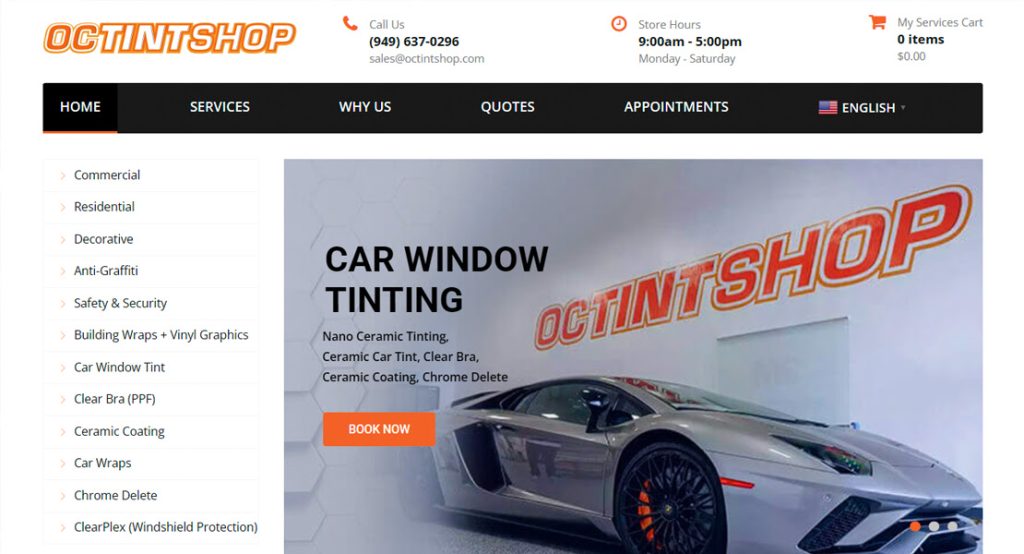
Window film has plenty of technical aspects, but at OC Tint Shop, we’ve always believed in keeping everything straightforward and giving our customers all the facts up front before they make any decisions. We’ve been Orange County‘s trusted tinting specialists for over 10 years now, and our clients include everyone from daily commuters in Irvine to luxury homeowners in Laguna Beach, and each customer gets the exact same honest conversation about what their film will actually do and what it won’t.
Some customers need to have their cars protected from those brutal summer temperatures, and others want to stop the UV damage to their home’s interior, and plenty of businesses just want to get better energy efficiency for their offices – no matter what brings you in, our team delivers that same commitment to quality work and straight answers on each project. Professional window tinting can make a real difference for your space.

